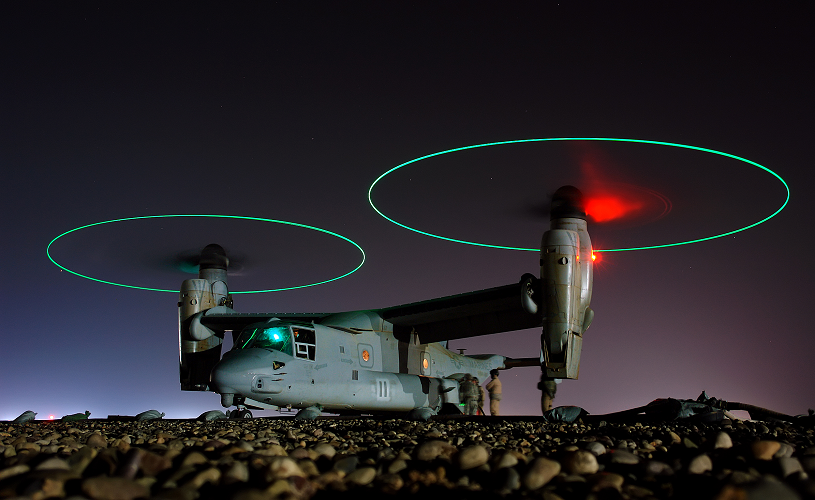This post is also available in:
 עברית (Hebrew)
עברית (Hebrew)
Tiltrotor aircraft are somewhat of a hybrid between a helicopter and a fixed wing aircraft. They are capable of vertical takeoff and landing, as well as traditional airplane takeoff. Once a tiltrotor is in the air, it could tilt its rotors and transition from a hovering aircraft to a flying one.
The latest version of the Osprey tiltrotor has recently been unveiled. The CMV-22B has been recently unveiled by Bell and Boeing. The newest tiltrotor by Bell will be the newest addition to the Osprey family, joining the CV-22 and the MV-22 already in use by American military forces.
The CMV-22B will be used by the United States Navy to replace the C-2A Greyhound aircraft the service operates for transporting personnel, supplies, cargo, and mail, from military bases to aircraft carriers out at sea. The CMV-22B has been designed specifically for operating with the Navy’s aircraft carriers. It has increased fuel capacity for extended range and will be able to transport major components of the F-35 engine.
“The first flight of the Navy’s CMV-22B marks a significant milestone for the V-22 program and for Naval Aviation,” said the Vice President of Bell V-22 and the Bell/Boeing deputy program director, Chris Gehler. “The Osprey has always been a revolutionary aircraft, and we look forward to continuing to support the evolving needs of the Navy with advanced tiltrotor capabilities.”
Although despite the delivery of the first Navy CMV-22B, there still aren’t any plans to put the tiltrotor in any action at least until 2021. The aircraft will undergo air tests and evaluations in the beginning of 2020 so that it could hopefully be up and operational by the first quarter of 2021.
The United States Navy has been insisting for the CMV-22B to be able to adequately support F-35C fighter jets that are deployed on the Navy’s aircraft carriers. The C-2A aircrafts is simply not capable of carrying the Joint Strike Fighter’s F135 turbofan engine, a critical issue for sustained operations, as mentioned by Defence-blog.com.


























